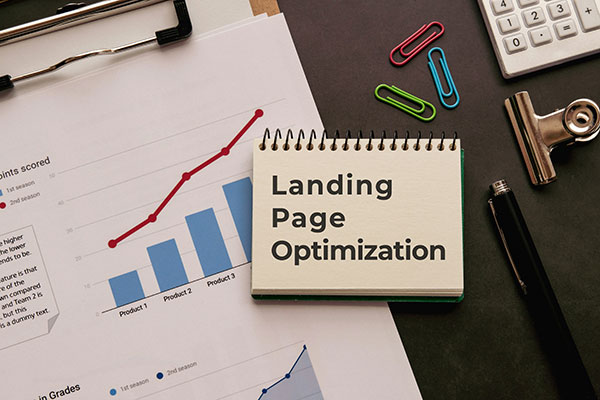At BSPKN, we help businesses in healthcare, financial services, and construction accelerate growth with data-driven marketing strategies. One of the most powerful yet misunderstood tools is Google Ads. While businesses know paid search can generate leads quickly, many waste thousands of dollars each month due to poor optimization.
The truth is, knowing how to improve Google Ads performance requires more than just setting up a campaign, it demands strategy, industry expertise, and ongoing optimization. Whether you’re trying to attract new patients, generate high-quality loan applications, or secure million-dollar construction contracts, the right approach can transform your results.
1. Use Negative Keywords to Protect Your Budget
One of the fastest ways to save money and boost ROI is by using negative keywords. These block your ads from appearing for irrelevant searches that drain your budget. Without them, you’re paying for clicks that will never convert.
- Healthcare example: A private clinic advertising “cosmetic surgery” should exclude terms like “free surgery” or “plastic surgery jobs.” These searches aren’t from paying patients, so they waste spend.
- Financial example: A bank promoting personal loans should exclude “student loan forgiveness” or “loan officer jobs,” which attract irrelevant clicks.
- Construction example: A commercial contractor should block terms like “DIY shed building” or “free blueprints,” since they target hobbyists, not high-value prospects.
2. Target Long-Tail Keywords for High-Intent Traffic
Generic keywords like “doctor,” “loan,” or “contractor” are expensive and too broad. Instead, focus on long-tail keywords, longer, more specific phrases that show stronger intent and usually cost less per click.
- Healthcare example: Instead of bidding on “doctor,” a clinic can target “urgent care near me open 24/7” or “pediatric dentist in Minneapolis.” These searches show immediate intent and higher conversion potential.
- Financial example: Rather than “loan,” a regional bank might target “small business loan for restaurants in Chicago.” These users aren’t just browsing, they’re actively looking to apply.
- Construction example: Instead of “contractor,” a firm can target “commercial roofing contractor in Minneapolis” or “warehouse expansion builders.” These phrases directly connect with serious projects.
By integrating long-tail Google Ads optimization, you spend less, rank higher, and attract the right customers.
3. Move Beyond Vanity Metrics
Clicks and impressions may look impressive on a report, but they don’t prove business impact. To truly optimize Google Ads, focus on meaningful KPIs like:
- Conversions: Appointments, applications, RFQs (requests for quotes)
- CPA (Cost Per Acquisition): How much it costs to win a customer
- ROAS (Return on Ad Spend): The revenue impact of each dollar spent
- Healthcare example: A hospital shouldn’t measure success by page visits, it should track booked consultations or telehealth appointments.
- Financial example: A bank should measure completed loan applications, not just ad clicks.
- Construction example: A firm should focus on how many RFQs were generated from ads, not overall site traffic.
At BSPKN, we align campaigns with bottom-line outcomes, ensuring marketing directly supports revenue growth.
4. Leverage Google Analytics & In-Market Segments
Google Ads gets smarter when paired with Google Analytics. By analyzing in-market segments, you can see exactly what your audience is researching and tailor campaigns accordingly.
- Healthcare example: If Analytics shows high engagement from people searching “pediatric urgent care,” a clinic can create dedicated campaigns for that service.
- Financial example: A bank seeing strong engagement from users comparing “mortgage refinancing rates” can shift spend toward refinancing ads.
- Construction example: If data shows interest in “warehouse expansion contractors,” a firm can run targeted campaigns showcasing industrial project expertise.
This deeper insight into audience behavior makes campaigns sharper, more efficient, and more profitable.
5. Use Ad Assets to Stand Out
Ad assets (previously called extensions) add valuable information to your ads, making them larger, more relevant, and more clickable.
- Healthcare example: A clinic can use call extensions so patients can instantly book appointments, or sitelinks for services like “Urgent Care” and “Telehealth.”
- Financial example: A bank can add sitelinks for “Auto Loans,” “Home Equity Lines,” and “Business Banking.” Price extensions can also showcase loan rates.
- Construction example: A firm can use location extensions to highlight nearby offices and project areas, making it easier for prospects to reach out.
Ads with assets not only stand out more, they often get higher Quality Scores, which lowers CPC and increases ad visibility.
6. Optimize for Conversions, Not Just Traffic
Traffic is meaningless if it doesn’t lead to results. Setting up proper conversion tracking ensures you’re measuring what really matters.
- Healthcare example: Tracking appointment bookings through forms, calls, or patient portal sign-ups.
- Financial example: Measuring how many completed loan applications come from ad campaigns.
- Construction example: Tracking RFQ form completions and direct project inquiries.
At BSPKN, we integrate CRM systems with Google Ads, giving sales teams immediate access to qualified leads while allowing marketers to track ROI in real time.
7. Use Advanced Tools for Smarter Optimization
While Google Ads offers built-in features, advanced tools give you a competitive edge. At BSPKN, we use:
- Google Keyword Planner for precise research
- SEMrush & Ahrefs for competitor insights and keyword gaps
- Automation scripts & dashboards for daily performance monitoring
- Healthcare example: Using SEMrush to identify keywords competitors aren’t targeting for telehealth services.
- Financial example: Benchmarking competing banks’ campaigns to find untapped ad opportunities.
- Construction example: Using Ahrefs to spot local contractor keyword gaps and optimize content around them.
With these tools, campaigns aren’t just running, they’re constantly evolving toward peak performance.
8. Retarget With RLSAs (Remarketing Lists for Search Ads)
Most users don’t convert on their first visit, but RLSAs let you retarget people who’ve already engaged with your site.
- Healthcare example: Retarget patients who visited the “Schedule Appointment” page but didn’t book.
- Financial example: Retarget prospects who started but didn’t finish a loan application.
- Construction example: Retarget businesses that viewed the “Portfolio” or “Case Studies” page without reaching out.
This strategy ensures your ads are shown to warm prospects, those closest to conversion.
9. Refine Campaign Details
Small adjustments often drive the biggest results. Refining by scheduling, demographics, and geotargeting helps stretch budgets further.
- Healthcare example: Run ads during clinic hours to encourage live appointment bookings.
- Financial example: Adjust targeting by income level to match loan or investment services.
- Construction example: Focus ad spend on regions with high new development activity or major infrastructure projects.
At BSPKN, we continuously fine-tune campaigns so clients get maximum ROI from every detail.
10. Continuously Test & Improve Ad Copy
Great ad copy isn’t written once, it’s tested continuously. Strong ads should include your primary keyword, highlight unique value, and end with a clear CTA.
- Healthcare example: Compare “Book Your Same-Day Appointment” vs. “See a Doctor Today.”
- Financial example: Test “Get Approved in 24 Hours” vs. “Fast Business Loan Funding.”
- Construction example: Run “Start Your Commercial Project Now” vs. “Trusted Contractors Near You.”
At BSPKN, we use A/B testing to refine headlines, descriptions, and calls-to-action until we find the highest-converting combinations.
Final Takeaway: Google Ads Optimization Is Ongoing
Improving Google Ads performance isn’t about one-time fixes, it’s about constant refinement, testing, and strategy. By applying these 10 tips, your business can:
- Eliminate wasted ad spend
- Attract higher-quality leads
- Improve ROI and long-term growth
At BSPKN, we specialize in Google Ads optimization tailored for the unique needs of healthcare, financial services, and construction industries. Our campaigns go beyond clicks, we deliver measurable results that fuel business growth.



